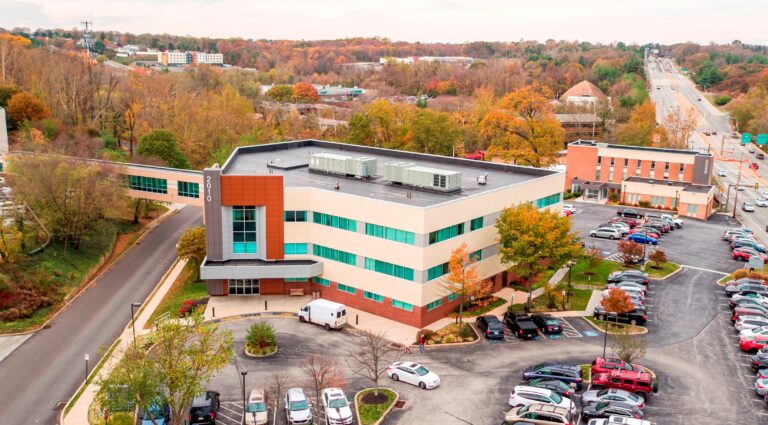For Anchor Health Properties, a solid investment thesis saved the day
By John B. Mugford

Anchor acquired the MOBs at 2010 and 2050 West Chester Pike in Havertown, Del., for a total of $20 million in September 2018 and invested another $3.5 million in capital improvements, including new systems, common areas, entrances and more. (Photo courtesy of Anchor Healthcare Properties)
For the owner of any real estate portfolio, the bankruptcy of the anchor tenant can be potentially devastating, even in the ordinarily resilient realm of medical outpatient buildings (MOBs).
“There just aren’t too many good stories in our sector over the last 25 years or so about healthcare real estate (HRE) firms like ours being in a situation where a health system filed bankruptcy and the real estate owner, as well as everyone involved, came out with a positive result,” acknowledges James A. Schmid III, chief investment officer and managing partner with Charlottesville, Va.-based Anchor Health Properties,
But that’s precisely what happened with a five-building, 241,155 square foot MOB portfolio that Anchor had amassed in the western suburbs of Philadelphia, in the northern Delaware County, Pa., cities of Glen Mills, Broomall and Havertown.
Mr. Schmid, who grew up in Broomall and works primarily out of Anchor’s nearby office in Media, Pa., says the successful repositioning and restabilizing of the Delaware County MOB portfolio reaffirmed the company’s original underwriting of the properties.
“While we were very fortunate to have wound up with this outcome, we did consistently believe in the assets and the underwriting thesis of why we acquired them in the first place,” he says, “and that was because of
The full content of this article is only available to paid subscribers. If you are an active subscriber, please log in. To subscribe, please click here: SUBSCRIBE




